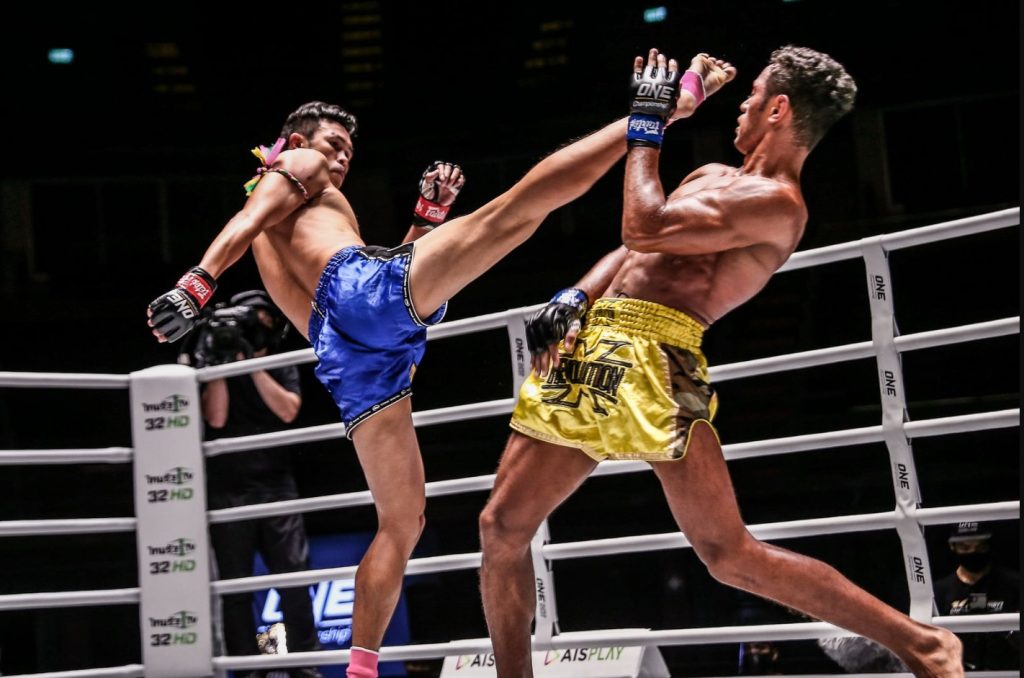Combat sports have gained immense popularity over the past few decades, with two of the most prominent being Muay Thai and Mixed Martial Arts (MMA). While both sports involve striking and physical conditioning, they differ greatly in rules, techniques, and strategies. This naturally leads to one burning question: who would win—Muay Thai or MMA? The answer isn’t simple. It depends on context, rules, and the fighter’s adaptability. This article explores the strengths, weaknesses, and key differences between Muay Thai and MMA to provide a comprehensive analysis.
Table of Contents
Overview of Muay Thai and MMA
| Aspect | Muay Thai | MMA |
|---|---|---|
| Origin | Thailand | Global (USA, Brazil, Japan) |
| Focus | Striking (8 limbs: fists, elbows, knees, shins) | Striking, grappling, submissions |
| Primary Techniques | Punches, kicks, elbows, knees, clinch | Punches, kicks, grappling, wrestling, submissions |
| Rules | Stand-up only | Stand-up and ground fighting |
| Training Emphasis | Cardio, pad work, clinch drills | All-round (striking, wrestling, BJJ, conditioning) |
| Equipment | Gloves, shorts, shin guards (optional) | Gloves, shorts, mouthguard, groin protector |
| Fight Duration | 5 rounds of 3 minutes (pro fights) | 3 or 5 rounds of 5 minutes |
Key Strengths of Muay Thai
- Devastating Clinch Game: Fighters use the clinch to deliver knees, control opponents, and disrupt rhythm.
- Powerful Kicks: Emphasis on shin conditioning makes kicks lethal and bone-rattling.
- Elbow Strikes: These are highly effective in close-range combat and can cause cuts quickly.
- Conditioning and Toughness: Fighters are trained to absorb and deliver punishment with minimal flinching.
Key Strengths of MMA
MMA is a hybrid combat sport that borrows techniques from multiple disciplines, including boxing, Muay Thai, wrestling, and Brazilian Jiu-Jitsu (BJJ). Strengths of MMA include:
- Versatility: Fighters are trained in striking, grappling, and submission, making them adaptable in any combat scenario.
- Ground Game: The ability to take an opponent down and finish with submissions or ground-and-pound is a major advantage.
- Cage Control: Using the environment (like the cage) to control positioning and tempo.
- Tactical Adaptability: MMA fighters often have fight IQ to switch strategies mid-fight.
Head-to-Head Comparison
| Category | Muay Thai Advantage | MMA Advantage |
|---|---|---|
| Striking (stand-up) | ✔️ | ✅ (more well-rounded, but slightly less refined) |
| Clinch Work | ✔️ | ⚠️ (Depends on grappling skills) |
| Ground Fighting | ❌ | ✔️ |
| Submissions | ❌ | ✔️ |
| Cardio & Conditioning | ✔️ | ✔️ |
| Adaptability | ❌ | ✔️ |
| Rule Set Limitations | ❌ (limited to striking) | ✔️ (fewer restrictions) |
| Defensive Skills | ⚠️ (less focus on takedown defense) | ✔️ |
What Happens in a Real Fight?
In a Muay Thai Match
- The Muay Thai practitioner would likely dominate.
- The rules prohibit grappling, submissions, or takedowns.
- The clinch, kicks, elbows, and knees would give the Muay Thai fighter a major edge.
In an MMA Match
- The MMA fighter would almost certainly win.
- The MMA fighter could close the distance, perform a takedown, and dominate on the ground.
- The Muay Thai fighter, unless cross-trained, would struggle once taken down.
Case Studies from UFC
Many Muay Thai fighters have transitioned successfully into MMA, but only after adapting their skill set. Let’s look at a few examples:
| Fighter | Background | MMA Record | Adaptation Required |
|---|---|---|---|
| Joanna Jędrzejczyk | Muay Thai | 16-5 | Learned takedown defense and BJJ |
| Edson Barboza | Muay Thai/KB | 24-12 | Improved grappling and wrestling |
| Anderson Silva | Muay Thai/Boxing | 34-11 | Cross-trained in BJJ and wrestling |
These fighters succeeded not because of Muay Thai alone, but because they evolved into mixed martial artists.
The Tactical Edge
Here’s how each fighter would approach a fight strategically:
| Scenario | Muay Thai Fighter’s Strategy | MMA Fighter’s Strategy |
|---|---|---|
| Stand-up Battle | Maintain range, use teeps, elbows, knees | Mix punches with takedowns and leg kicks |
| Clinch Situation | Land knees and elbows | Attempt a trip or takedown from the clinch |
| On the Ground | Limited skills | Dominate with ground-and-pound or submission |
| Against the Cage | Try to escape to center | Control posture, press for takedown |
Which Is Better for Self-Defense?
| Factor | Muay Thai | MMA |
|---|---|---|
| Real-World Striking | Excellent | Very Good |
| Ground Control | Weak | Excellent |
| Escape Techniques | Limited | Versatile |
| Weapon Defense | Moderate (mostly reflex) | Moderate to Good (depending on training) |
| Overall Utility | 7/10 | 9/10 |
For self-defense, MMA holds an edge due to its coverage of both striking and grappling. However, Muay Thai’s brutal efficiency can be decisive in stand-up encounters.
Who Would Win?
The answer to “Who would win—Muay Thai or MMA?” hinges on context:
- In a Muay Thai ring with traditional rules? Muay Thai wins.
- In an MMA octagon with unified rules? MMA wins.
- In real life or street defense? MMA has a broader toolset, but Muay Thai is still highly practical.
Ultimately, MMA is not a martial art—it’s a sport that includes Muay Thai, along with others. A well-rounded fighter today must borrow from all disciplines, and in that regard, Muay Thai remains a pillar of striking that no MMA athlete can afford to ignore.

